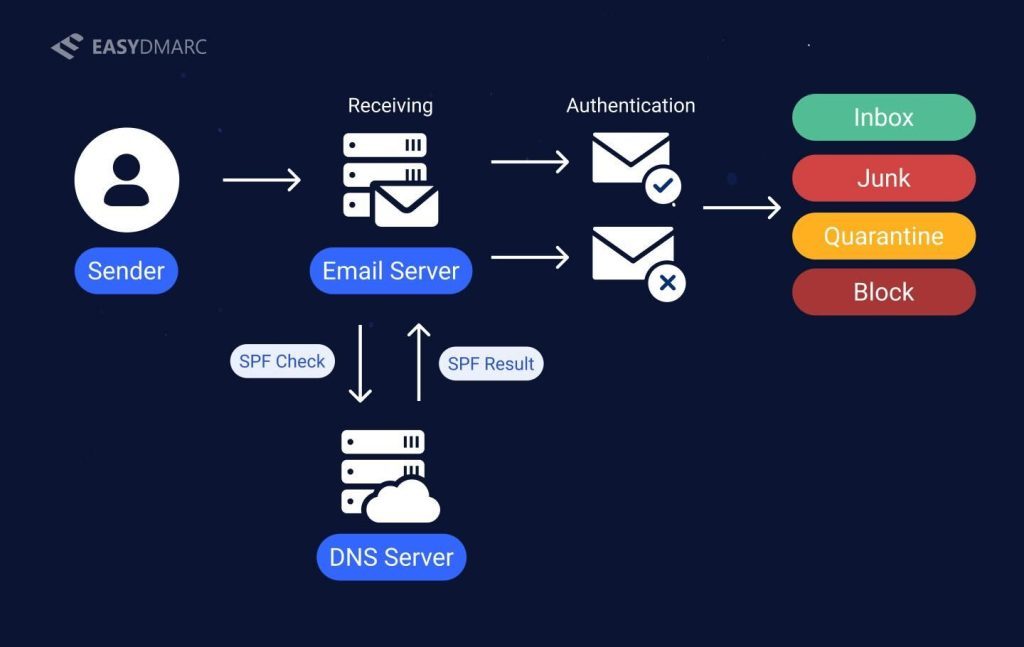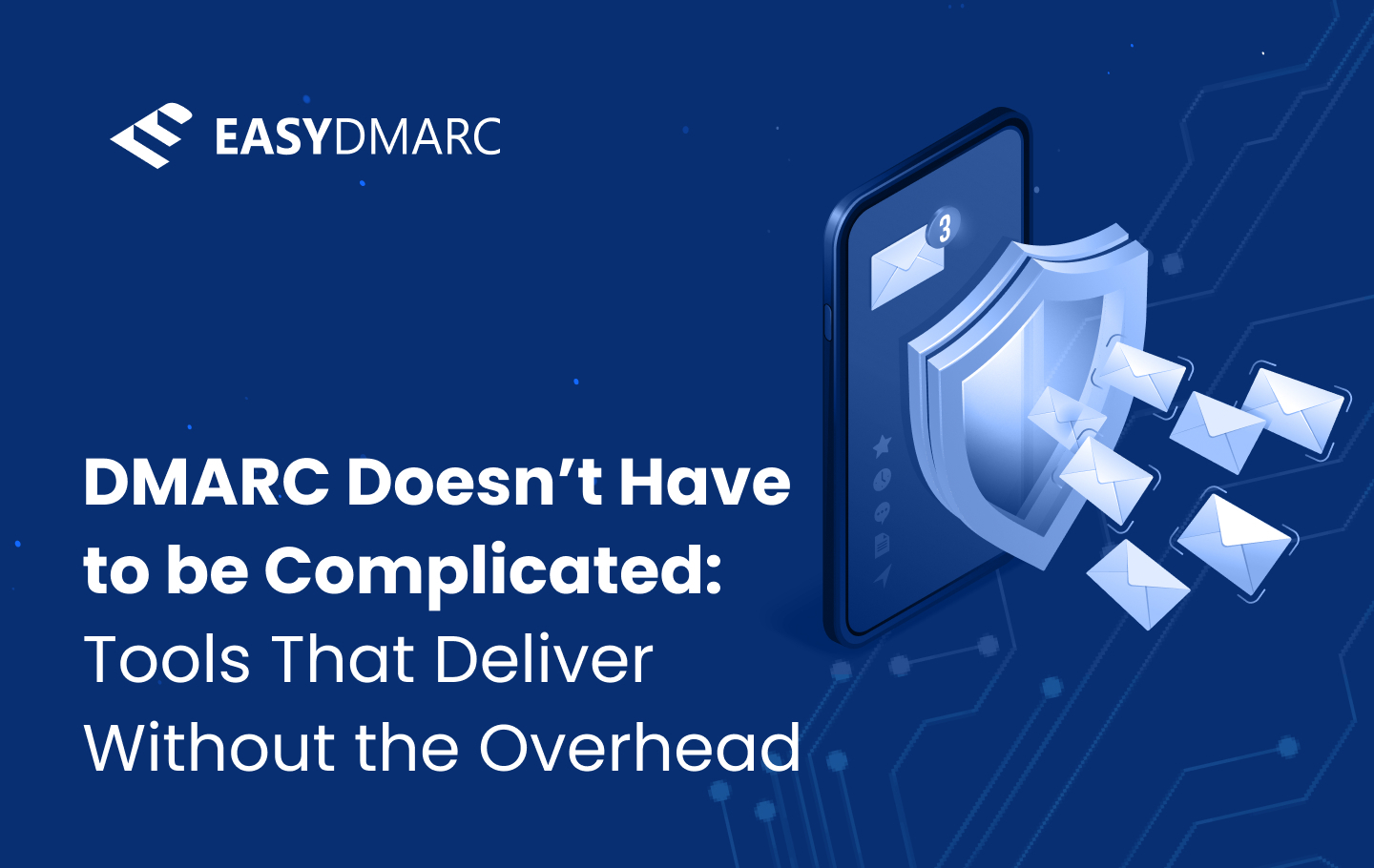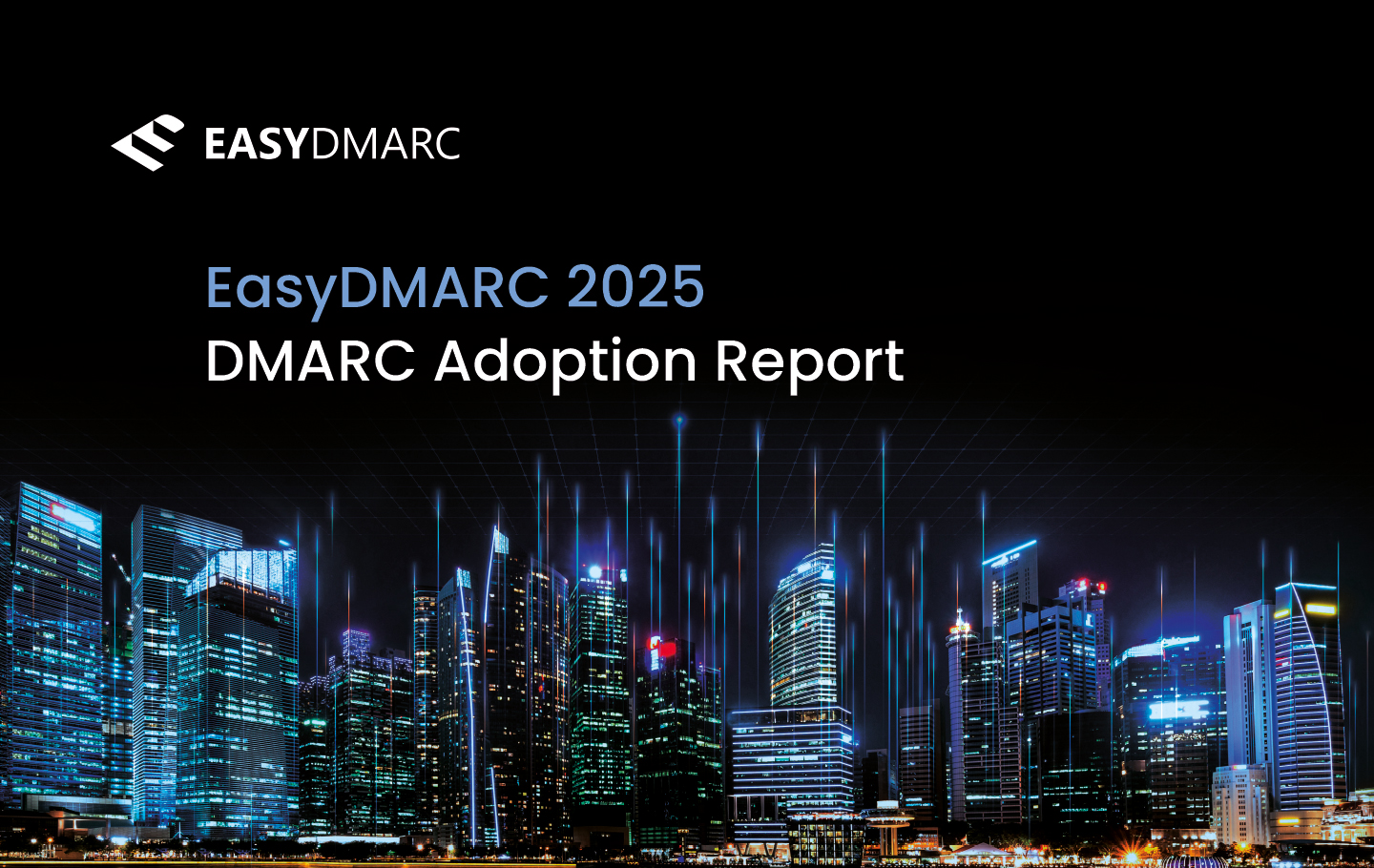Many companies see DMARC as something too technical to manage. It often appears as if it will take a lot of time, effort, and expert knowledge, but in reality, there are simple DMARC solutions that make the process easier than you might expect.
The truth is that many modern DMARC platforms understand that the technical aspects are intimidating, and account for that by including tools that reduce manual work and give guidance to those without deep technical skills. With the right support, DMARC implementation can be smooth, even for mid-size or small businesses that don’t have massive IT resources.
In this article we’ll discuss what to look for when choosing a DMARC solution with easy implementation features. We’ll discuss what kind of tools your selected platform should have, why these tools matter, and some common challenges of DMARC adoption.
The Challenges of DMARC Adoption
One of the main barriers to DMARC implementation is the technical knowledge it appears to require. Setting up DNS records, checking alignment, and knowing how different email systems interact can be confusing without a technical background. Even large organizations with IT teams can fail to reach full protection. They either stay stuck in the early stages or end up with gaps that attackers exploit.
Further complicating the process is that DMARC is not something you set up and forget. It requires ongoing monitoring to make sure policies continue to work and to adjust them when problems appear. Reports on DMARC can be hard to read, and often come in raw data formats that make it difficult to quickly see what is wrong or where the risks exist.
To compensate for these knowledge gaps and common pitfalls, the best DMARC platforms often feature tools that make common actions as easy as clicking a button. They will house large, easily-searchable knowledge bases that can bridge the gap between novice and intermediate level expertise, and offer DMARC experts where these tasks become complicated.
It’s important to verify that a chosen DMARC platform isn’t simply there to take your payment and let you figure out the platform on your own — ongoing support may be the most important aspect of any email security and deliverability solution.

User-Friendly Tools that Simplify DMARC
You don’t need to be an expert to start using DMARC. Instead of digging through long guides or worrying about mistakes, you can use simple tools that walk you through the process step-by-step and offer tools and solutions that make setup quick and easy, even if you don’t have a technical background. EasyDMARC is one such solution, and offers several quality-of-life tools, such as:
DMARC Record Generators
DMARC often starts with the creation of a DMARC record, but for the uninitiated, writing a DMARC record from scratch can feel intimidating. A DMARC record generator does the hard part for you by creating correct records with little input and in just a few clicks.
SPF Checkers
SPF settings tell the world which servers are allowed to send emails for your domain, and if they’re off, your emails might get blocked or sent to spam. With an SPF checker, you can instantly see if everything is set up correctly and fix issues before they cause problems down the road.
Email Header Analyzers
When emails don’t deliver as expected, the details inside an email header can hold the answer, but reading through them takes more time than you’d expect. An email header analyzer breaks the data into plain language so you can spot problems and solve them quickly.
These tools cut out the need for learning the exact coding language and which terms affect what aspects of your email security and deliverability. Companies can skip the heavy technical work and still get strong protection, and if questions come up, platforms like EasyDMARC offer expert guidance and ongoing support.
Matching DMARC Tools to Company Needs
Not every company has the same needs when it comes to email security. A mid-size business often just wants tools that are quick to set up, easy to manage, and don’t take a lot of time away from regular work. Features like guided setup and automation make a big difference, because they let smaller teams get protection without extra effort.
Large enterprises, on the other hand, usually need more than just the basics. With multiple domains, bigger email volumes, and global teams, they rely on scalable platforms that can handle complex reporting and detailed monitoring. These features give them the visibility to spot risks early and the flexibility to manage policies across different departments or regions.
Here EasyDMARC covers both ends of this spectrum. Our primary focus is to provide powerful DMARC tools with easy setup for mid-size companies, offering lightweight tools that are perfect for starting out. At the same time, we provide enterprise-grade features like advanced reporting and ongoing monitoring for organizations that need a broader, more comprehensive solution for existing systems. This has the benefit of being a long-term DMARC solution that does not require switching platforms later.
Regardless of your DMARC solution, make sure to fit the features, benefits, and budget to your company first and foremost, but understand that reporting and monitoring are the core of a good DMARC deployment and maintenance strategy.

Why Dmarc Reporting and Monitoring Matter
Setting up DMARC is the first step, but DMARC maintenance (reporting and monitoring) is what truly protects your business. Email systems evolve, new third-party services get added, and attackers are constantly testing for weak spots. Without ongoing monitoring, even a well-configured policy can lose effectiveness over time.
DMARC reporting and monitoring can help you:
- Catch issues early: Reports show which emails are passing authentication and where failures occur, allowing you to fix problems before they disrupt communication.
- Stay ahead of attackers: Continuous monitoring helps identify unauthorized senders or suspicious activity, reducing the risk of phishing or spoofing campaigns.
- Simplify audits: Dashboards translate complex raw reports into easy-to-read insights, making it simple to demonstrate compliance and maintain trust.
- Maintain deliverability: Regular checks prevent legitimate emails from being blocked or flagged as spam, keeping communication flowing with customers and partners.
EasyDMARC makes this process simple by turning raw, technical reports into clear visuals and alerts, so even non-technical teams can act quickly. With the right monitoring tools for your company, DMARC becomes a security standard and an ongoing safeguard for your brand’s reputation and customer trust.
What Are the Best DMARC Implementation Practices for Enterprises?
Enterprises often operate complex email systems with many domains, departments, and high volumes of traffic. This increases both the importance and the difficulty of implementing DMARC correctly. The following best practices can help:
- Start in monitoring mode: Use a policy of “none” to observe email traffic and uncover issues before moving to stricter enforcement.
- Review reports regularly: Reports reveal unauthorized senders, alignment problems, and deliverability issues. Regular checks help identify risks early.
- Automate where possible: Tools that simplify record updates, policy changes, and report analysis reduce manual effort and prevent errors.
- Balance security with deliverability: Move toward “p=reject” gradually to maximize protection while making sure that legitimate emails continue to reach inboxes.
- Coordinate across teams: Collaboration between IT, security, and marketing ensures that all legitimate senders are configured correctly.
- Plan for scalability: Select solutions that can support multiple domains and global operations so the DMARC setup can adapt as the organization grows.
Following these practices helps enterprises maintain strong protection, improve deliverability, and keep email systems aligned with evolving security needs.

How Can I Protect My Brand Through Email Authentication Services?
Every email you send carries your brand’s name, and if attackers use your domain to send fake messages, that trust can quickly disappear. When DMARC is paired with SPF and DKIM, it blocks phishing, spoofing, and other types of domain abuse. This means customers can trust that the emails they receive really come from you.
Without these protections, a single spoofed message can harm years of relationship-building. If people get fake emails that look like they’re from your company, they quickly lose confidence, and even genuine messages may go unread. With email authentication as your wider security strategy, you safeguard both your reputation and your connection with customers.
What Tool Is Best for Ongoing DMARC Policy Monitoring?
The best tool for ongoing DMARC policy monitoring is one that provides continuous visibility into email traffic, makes complex reports easy to understand, and adapts as your organization grows. Raw DMARC reports can be overwhelming, often arriving as XML files that are nearly impossible to interpret without technical expertise. A strong monitoring solution turns that data into clear information, alerts, and insights that both technical and non-technical teams can act on.
Solutions like EasyDMARC are designed with this exact need in mind. Our platform translates raw data into visual reports, highlights unauthorized senders, and notifies you when something looks suspicious. We also simplify policy adjustments, which is critical when new email services or third-party providers are introduced into your ecosystem. For larger organizations, advanced monitoring capabilities allow IT and security teams to manage multiple domains and regions from a single place, ensuring no gaps appear in protection.
What sets EasyDMARC apart is the balance it strikes between depth and accessibility. Security specialists get the level of detail they need for investigations (with the help of DMARC engineers on hand and ready to help), while marketing and operations teams can quickly confirm that legitimate emails are reaching inboxes. By combining monitoring, reporting, and policy management in one platform, EasyDMARC helps organizations maintain strong domain protection and safeguard brand trust long after initial implementation.
Frequently Asked Questions
The easiest way to get started with DMARC implementation is using automated tools. A DMARC Record Generator creates the correct record for your domain in just a few clicks, so you don’t have to figure out the technical wording yourself. You can then use an SPF Checker to confirm your SPF record is set up properly. These tools save time and prevent common mistakes that often delay implementation.
You don’t need to be a security expert. Basic knowledge of how to access your domain settings is usually enough to get started. Tools with step-by-step guidance simplify the process for you, and many providers also offer expert support when you need extra help. Over time, ongoing monitoring and reporting are handled mostly by dashboards and alerts, which are easy to understand even for non-technical teams.
DMARC generates reports that show how your emails are being handled across the internet. The challenge is that these reports come in a raw format that’s hard to read. To keep accuracy high, organizations use reporting platforms that collect this data, organize it, and display it in dashboards. This way, you can quickly see which emails are passing, which are failing, and what needs fixing, without getting lost in spreadsheets.
Alignment issues happen when the technical details in an email, like the domain in the “From” address and the domain in the underlying records, don’t match. When this occurs, emails may fail DMARC checks. Companies fix these issues by reviewing their reports, identifying where the mismatch is happening, and updating their DNS records or email service settings. With automation, many of these updates can be made faster and with less risk of error.


